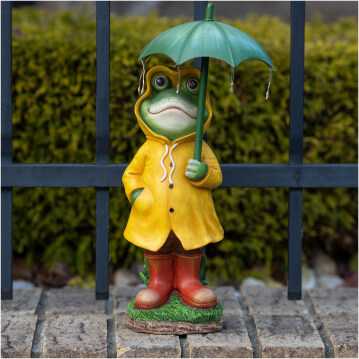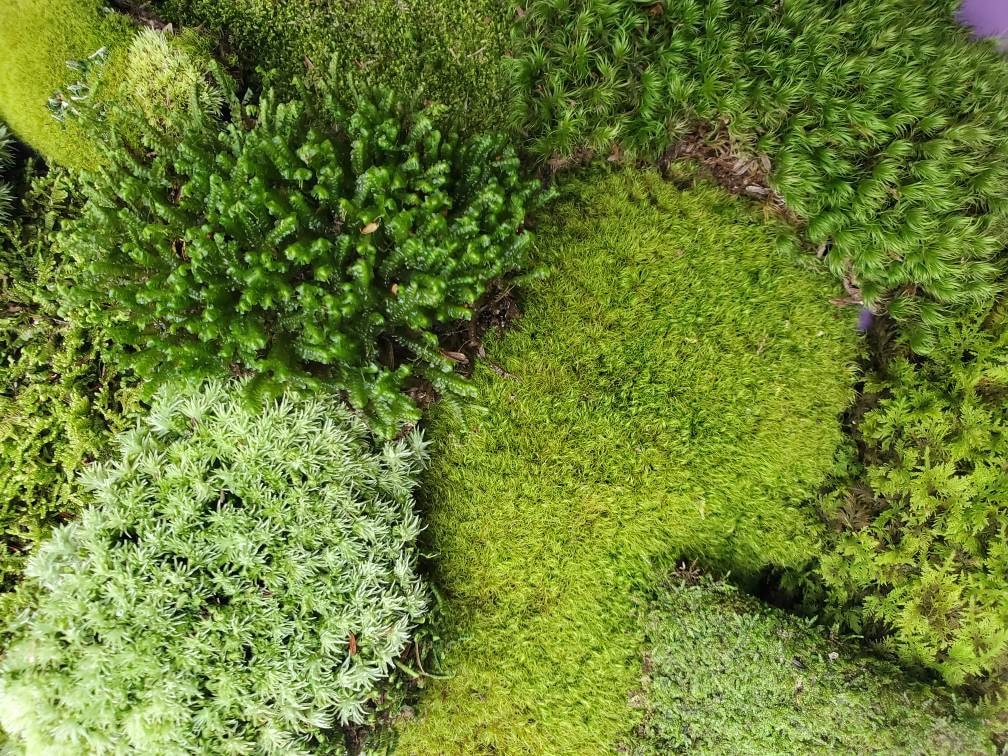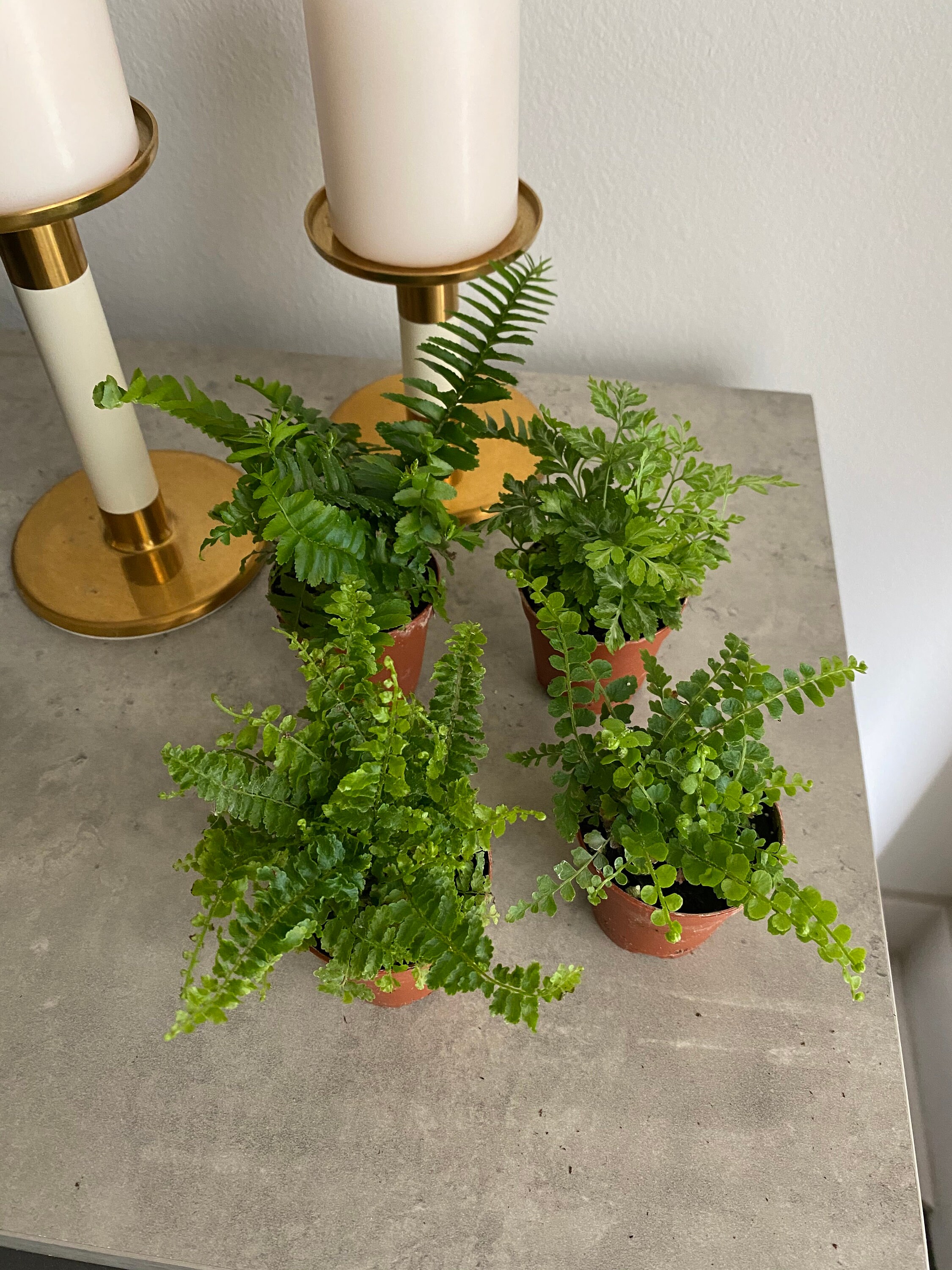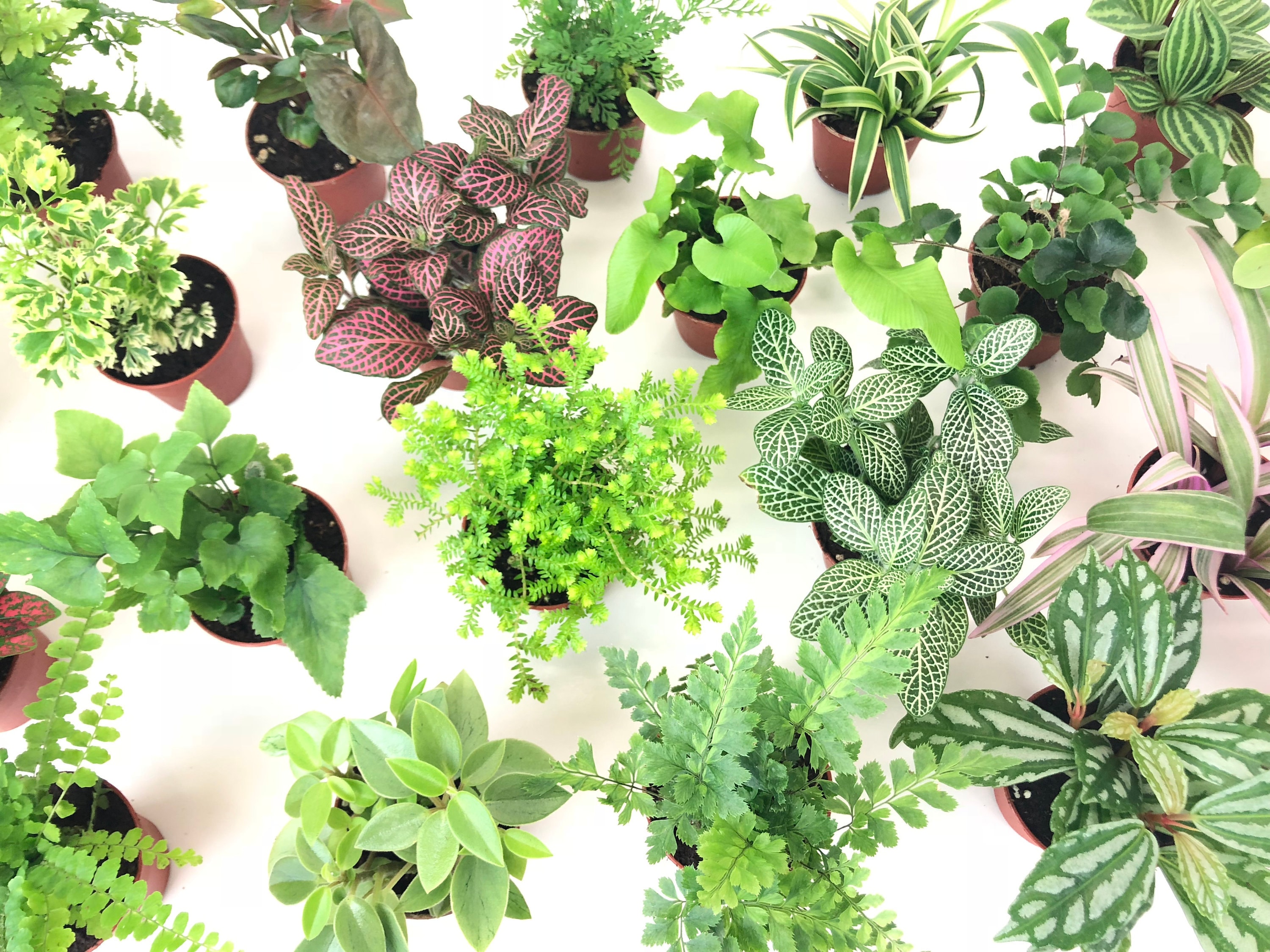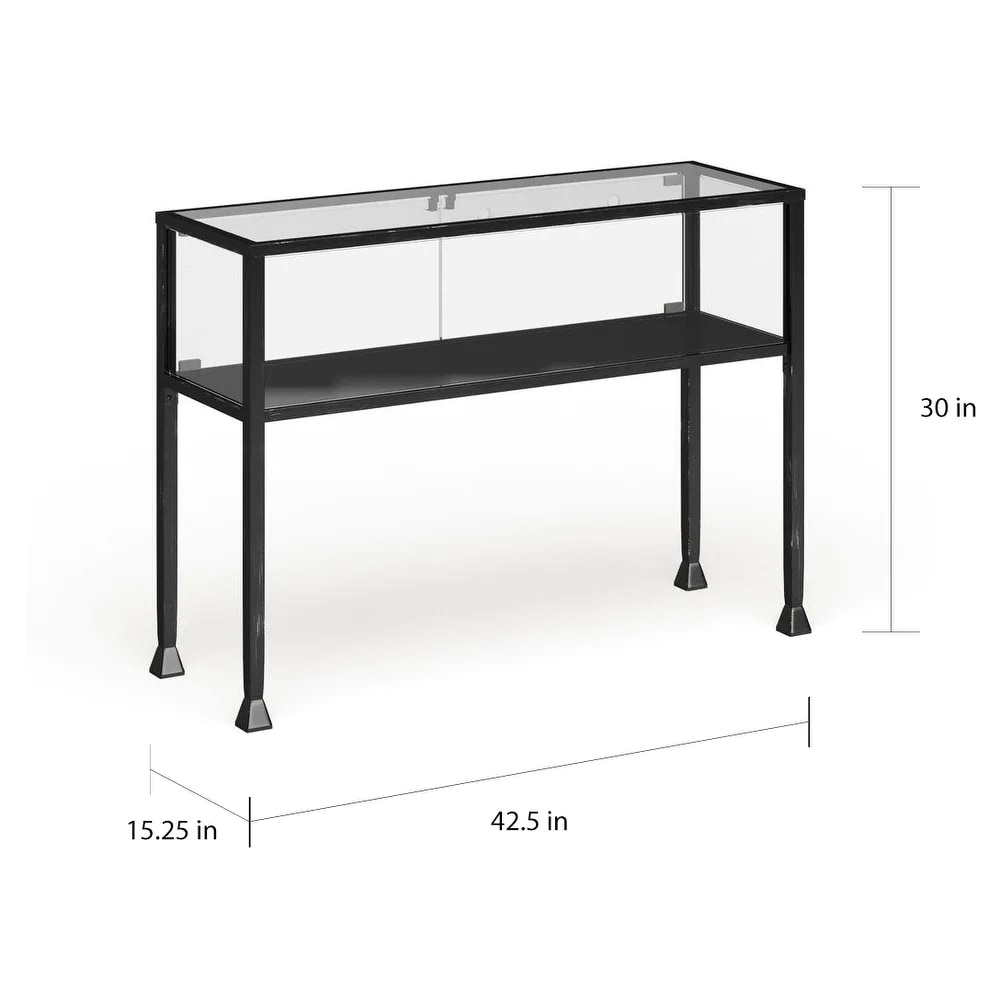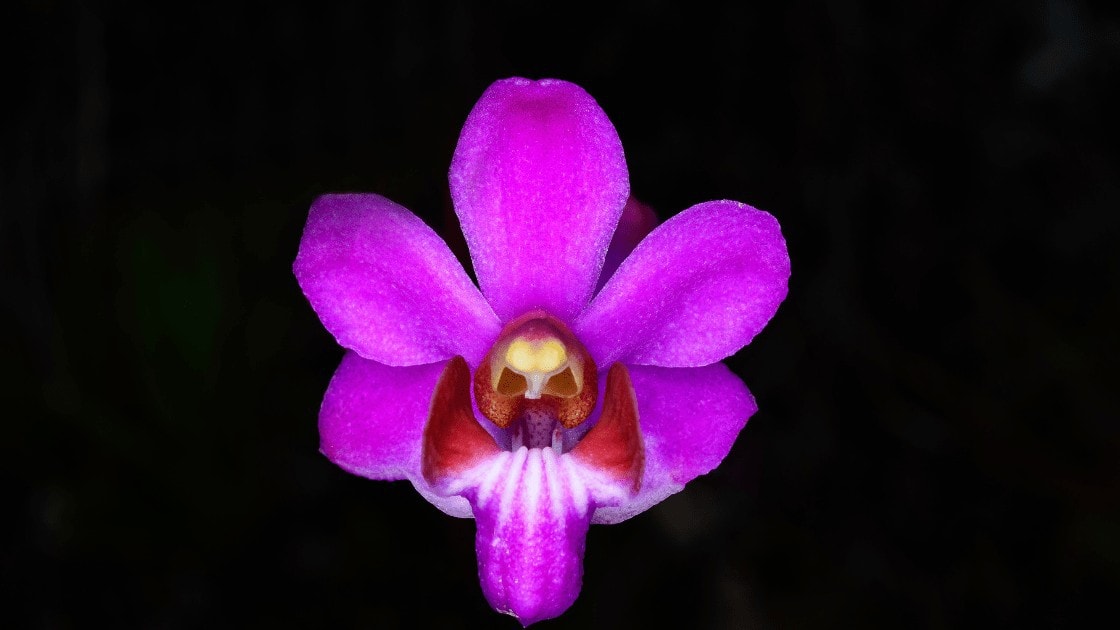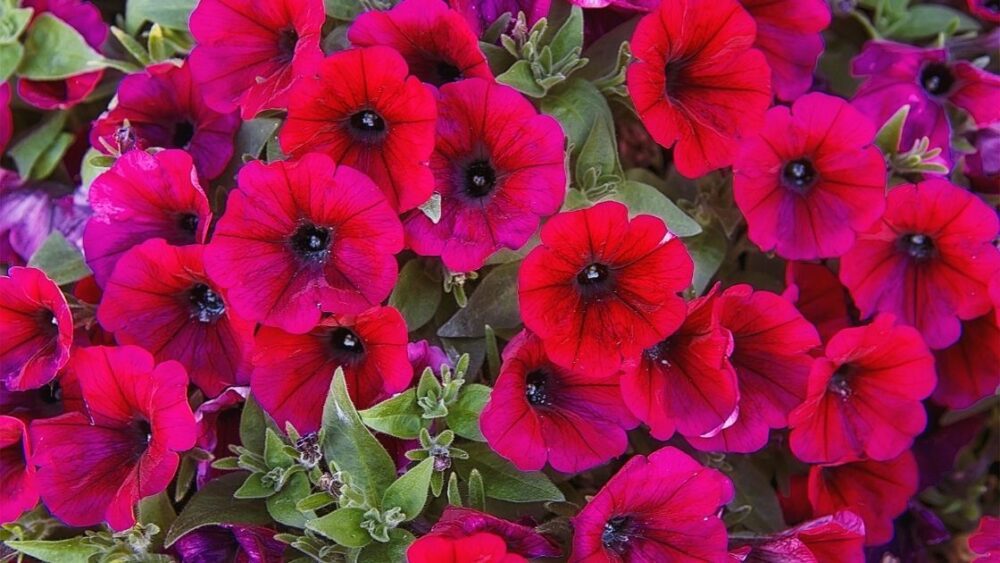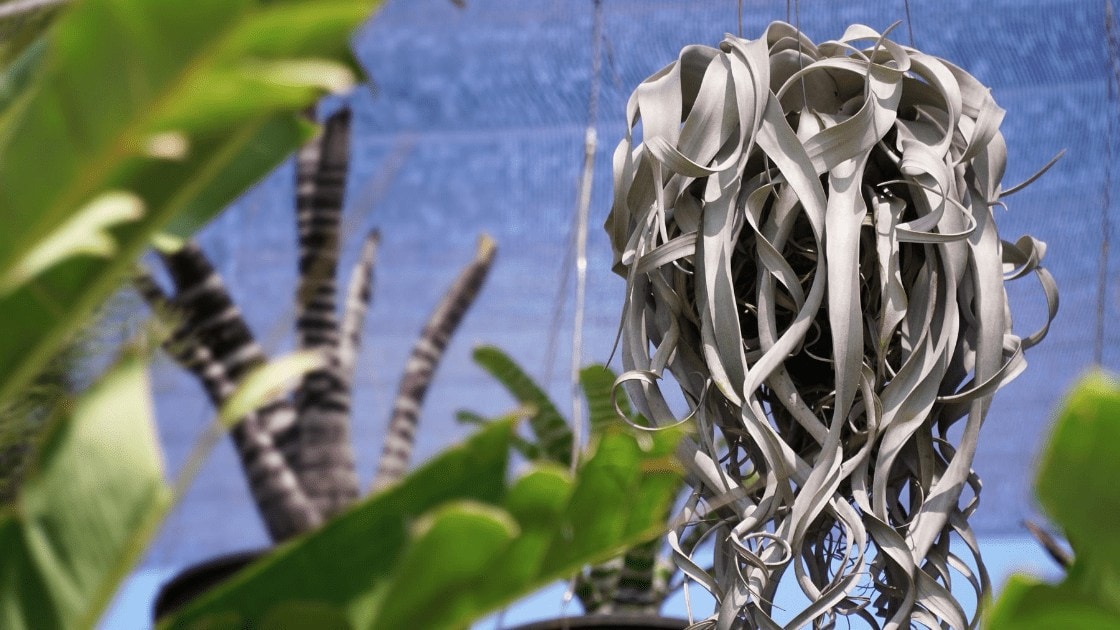
In many ways, open terrariums are more versatile than closed ones. They are more tolerant to overwatering, less prone to overheating and condensation, but best of all – they are suitable for a much wider range of plant species. Closed terrariums, with their 80%+ humidity are only suitable for tropical, forest or bog plants. The majority of plant species are unsuitable for closed terrariums and will eventually succumb to mold and rotting issues. Open terrariums, on the other hand, can even accommodate succulents. In fact, practically any plant can grow well in an open terrarium, depending on its size, opening area and misting frequency.
Which Plants Work Well for Open Terrariums?

Here is a non-exhaustive list of plant species suitable for open terrariums:
- Small ferns, like the Lemon button fern (Nephrolepis cardifolia), button fern (Pellaea rotundifolia) and Silver lace fern (Pteris ensiformis)
- Polka dot plants (Hypoestes phyllostachya)
- Miniature begonias (Begonia spp.)
- Many types of low-growing grasses (Festuca, Ophiopogon, Imperata)
- Sedum (for more dry, succulent-based terrariums)
- All types of air plants, like Tillandsia (they require more frequent misting)
- Pilea (some species are suitable for larger terrariums with more than 10 inches of vertical growth space, others like Pilea microphylla are very tiny)
- Peperomia
- Maranthas (suitable for larger terrariums)
- Pothos
- Baby tears (Soleirolia soleirolii)
- Nerve plants – extremely commonly used and very versatile – they look similar to polka dot plants, but have variegated lines instead of dots.
Even though almost any plant out there can survive in an open terrarium, it’s important to make a proper selection of plants that work well together. For example, combining succulents with faster-growing, non-succulent plants will obviously not work – to support the growth of the non-succulent plants, frequent watering will be required. This constant moisture will quickly lead to root rot in the succulent plants.
Browse our Affiliate Products
When choosing plants that work well together, we want to consider their height, spread, light requirements and humidity preferences. For more information on lighting, check out this article. How to Properly Light a Terrarium: Artificial vs. Natural Lighting
We also want to factor in how large the opening of the terrarium is and how much airflow it will support. This will determine the temperature rise with sun exposure. This comes down to common sense – bottle-type terrariums obviously have very small opening compared to their volume. This means the terrarium will heat up a lot when given direct sunlight, making sun-loving plants (like succulents) unsuitable for it.
Generally, speaking, the more closed a terrarium is, the more it mimics a forest environment, making it suitable for ferns, orchids, bromeliads and air plants. Very open, dish-like terrariums can mimic a variety of environments depending on the misting and watering schedule – they can even accommodate succulents.
Here are a few arrangements that work well for open terrariums:
Moss cover with a single, larger plant
This is one of the easiest terrariums to create. It has a minimalist, stylish look and simulates a field in nature. To create this terrarium, layer the soil, plant a single plant of your choice and then cover the surface with live moss. Place one or two rocks on top of the moss – these have a purely aesthetic purpose and can be omitted.
For the actual plant, we want a low-growing one with a larger horizontal spread. The most common choices are:
- African violets – probably the most commonly used flowering terrarium plant
- Polka dot plants
- Red flame ivy
- Various Bromeliads (Like the Earth star plant).
Grass cover in combination with red-leaved plants
Another very common style. Instead of grass, small, low-growing species of Pilea, or others can be used. The Polka dot plant is the most common red-leaved species used in terrariums. Various bromeliads, air plants and Maranthas can also be used.
Orchid terrariums
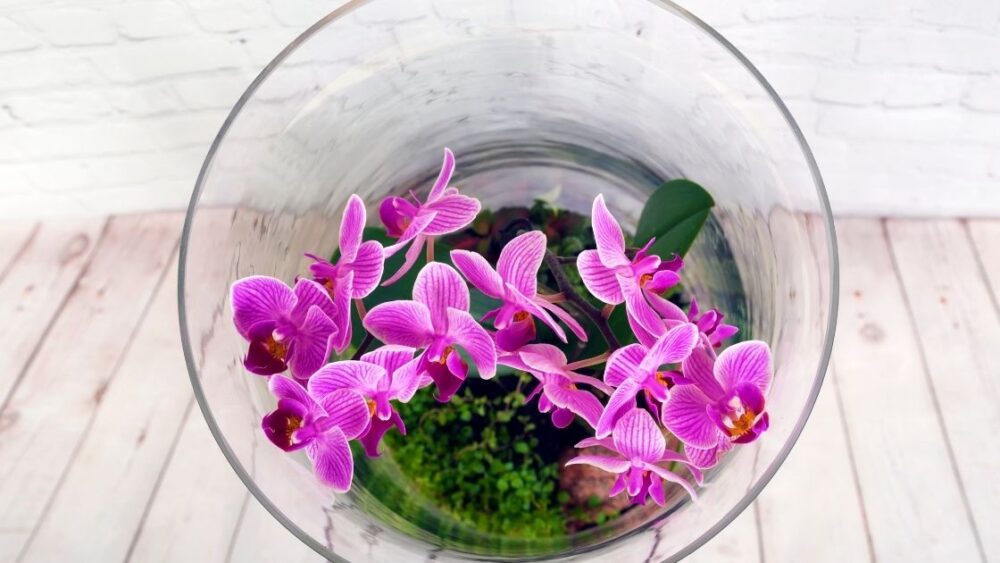
Those terrariums usually contain a single orchid plant, surrounded by moss and stones. Various species can be used, with Masdevallia, Angraecum and Tolumnia being the most common. Those are species with low light requirements that do well in a wide range of air humidity.
A dense combination of various small-leaved species
Basing the whole terrarium on differently-colored polka dot plants is also extremely common. The problem with this type of terrarium is that the dense foliage limits the amount of light reaching the lower leaves, which may cause them to get slightly discolored. Monthly terrarium maintenance and pruning can solve this problem. If you’re looking for very low-maintenance terrariums, it’s best to use succulents, which grow extremely slowly.
For further reading on building terrariums, check out this article. How to Build Your Own Terrarium: Beginners Guide.
Which Plants Are Unsuitable for Open Terrariums?
All plants species can work well in an open terrarium. However, some are less suitable than others – this always comes down to terrarium size, shape and depth of the substrate. Here’s a quick list of plants that may not work for all types of terrariums:
Succulents
Most succulents hate continuous moisture in the root zone. They are also inefficient at photosynthesis and therefore require direct sunlight, which causes too much heating in more closed terrarium designs. Here are a few things to consider when creating a succulent terrarium:
- A deep substrate is better (more than 2 inches). Thin substrates will get too soggy, even with sparse watering.
- Careful, infrequent watering with small amounts of water works best. Using too much water will create a soggy mess and quickly lead to root rot.
- A terrarium with large opening that doesn’t heat up much in direct sunlight is often the only option. Indirect sunlight can also work well for succulents, but it has to be very bright.
In addition, we have a lot more reading in our succulent and terrarium category. Succulents and Terrariums.
Fast-growing plants
The low amount of soil, in combination with reduced carbon dioxide and light availability will usually slow down the growth of plants in a terrarium, but fast-growing species can still create a lot of overgrowth, which will require pruning. Rosary vines, Asparagus and various ivy species are examples of too fast-growing plants.
Does Terrarium Size Determine Plant Suitability?
Terrarium size does influence the choice of plants. The important factors are the substrate depth, opening area and total open height of the terrarium. Somewhat counter-intuitively, deeper substrates are more suitable for more drought-loving species. For succulent terrariums, a substrate depth of more than 2 inches is required. Orchids almost always require tall terrariums – glass cylinders work best for them.
Experimenting With Other Plant Species
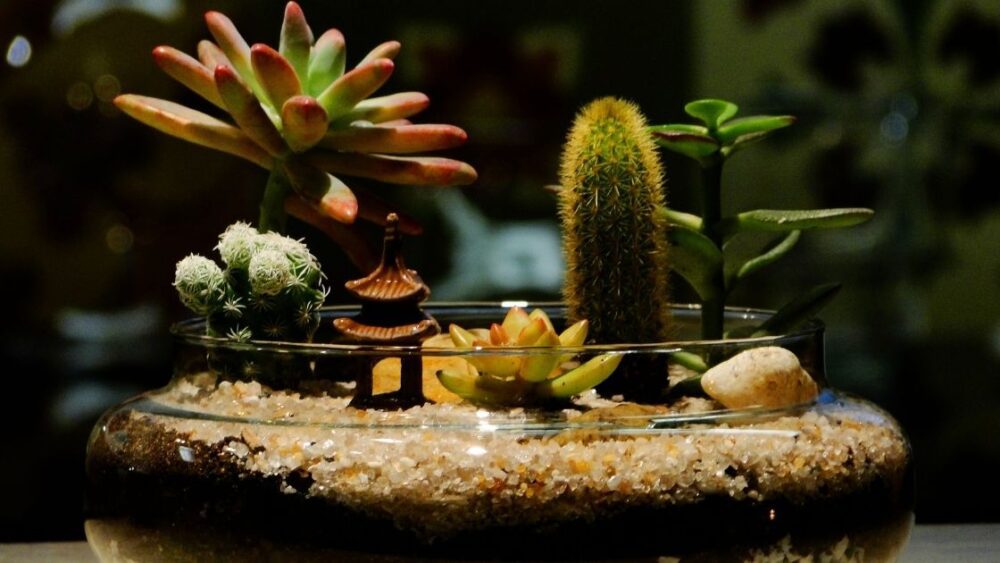
There are no strict rules when it comes to open terrariums – feel free to use whatever type of plants you like. Eventually, you may find that some species don’t do well and experience various problems due to the high humidity. Other species may start yellowing due to low light levels. And other may simply grow too quickly to be suitable for your terrarium size.
Final Thoughts
There are many different types of open terrariums, based on their volume and opening size. Dish terrariums almost resemble an open-air potting container with no drainage holes – those terrariums can accommodate any type of houseplant that can grow in a pot.
Bowl terrariums on the other hand, will lead to much higher humidity and will be more suitable for tropical plants and orchids. When choosing terrarium plants, always consider the effect of strong sunlight, which can lead to very high temperatures inside the enclosed space. The more sun-loving a plant is, the more ‘open-type’ of a terrarium it needs.

